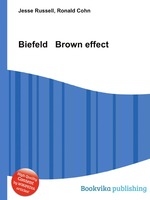Biefeld Brown effect
Jesse Russell Ronald Cohn
бумажная книга
High Quality Content by WIKIPEDIA articles! The Biefeld–Brown effect is an electrical effect that produces an ionic wind that transfers its momentum to surrounding neutral particles, first discovered by Paul Alfred Biefeld (Germany) and Thomas Townsend Brown (USA). The effect is more widely referred to as electrohydrodynamics (EHD) or sometimes electro-fluid-dynamics, a counterpart to the well-known magnetohydrodynamics. Extensive research was performed during the 1950s and 1960s on the use of this electric propulsion effect during the publicized era of the United States gravity control propulsion research (1955 - 1974). Top secret experiments into the effect were also conducted in France 1955-1958 by Thomas Townsend Brown and SNCASO called Project Montgolfier. During 1964, Major Alexander Procofieff de Seversky published much of his related work in U.S. Patent 3,130,945, and with the aim to forestall any possible misunderstanding about these devices, termed these flying machines as ionocrafts. In the following years, many promising concepts were abandoned due to technological limitations. The effect has only recently become of interest again and such flying devices are now known as EHD thrusters. Simple single-stage versions lifted by this effect are sometimes also called lifters.


